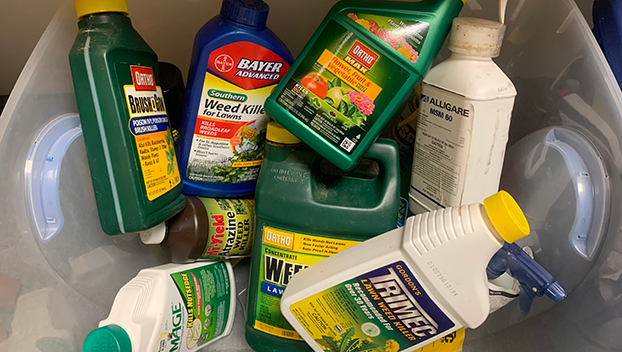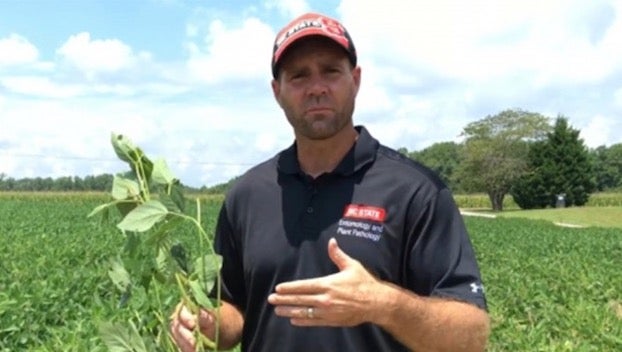A beginner’s guide to pesticides
Published 2:36 pm Thursday, June 10, 2021

- GUIDE FOR GARDENING: Pesticides are available in a litany of forms and can be used to treat many different ailments plants might face. Be sure to check the label thoroughly before using any pesticide at your home. (Photo submitted by Gene Fox)
|
Getting your Trinity Audio player ready...
|
This time of year, with every passing warm day, a hot topic has been spraying herbicides on home lawns. I fielded this question three times this week. We have many tools that we can spray, sort of like saying, “There’s an app for that,” we have “-icides” for many of the pests that pester us. We have pesticides, miticides, bactericides, fungicides, herbicides, and insecticides, it’s enough to give you a headache. So, what are all of these
Some are self-explanatory such as pesticides. This is a generic term that, according to the EPA, is used to describe any substance or mixture of substances intended for preventing, destroying, repelling or mitigating any pest. This term encompasses all of the above “-icides”.
How do you know what to spray for that? The first step to mitigating a pest problem is to know what you are dealing with through identification. Is it a disease problem in your tomato patch? You need to know: is this a fungal disease, bacterial disease, or a viral disease. Of the diseases we deal with in the home garden roughly 80% are fungal. 15% bacterial, and 5% are viral. You cannot cure diseases so it is important to use fungicides or bactericides to prevent the disease before occurrence. Viruses in the home garden, just like humans, there is no cure or prevention for a virus.
Is it an insect or a mite? Many of the insects you find in your garden are not pests, many are beneficial. When we spray a broad-spectrum insecticide, we kill the beneficials leaving our garden with more issues than when we started. For this reason, we need to make certain which “-icide” we need and for which pest we need it. Broad-spectrum and systemic insecticides will kill all insects in most cases and should be used with great caution. There are chemistries that are less potent such as insecticidal soaps and horticultural oils that will help us to get rid of the “bad bugs” while protecting the “good bugs”. This is called integrated pest management.
Herbicides on lawns this time of year are a touchy subject. If it is hot, above 85°Fahrenheit, and you are spraying, you are most likely going to injure your turf. Many formulations will advise you not to use them above 85° – 90°Fahrenheit but you would only know this if you read the label. This can be critical to the chemical’s success and to the health of your turf.
Another really good practice is to use all of the chemical solution at one time. These chemicals breakdown really quickly once they are mixed. The efficacy of the solution will go downhill very quickly as well. Sunlight, air, and water all affect how long the formulation will remain effective. The pH of the water you are mixing the solution with will have a tremendous amount of influence on how efficacious it will be and how long the solution will last. You can get your water tested through the NCDA&CS Agronomic Lab in Raleigh for a cost of $5.00. This is especially important if you are using well water.
There are pollinators to think about when spraying insecticides as well. One of every three bites of food we eat requires animal pollination. I don’t know about you, but I like to eat fresh fruits and produce. One thing you can do is read the entire label of a product before you use it. Look for the Bee Icon on the label to ensure the product is safe for bees and other pollinators.
If you are having an issue in your home garden or landscape, send your questions to Gene Fox, Consumer Horticulture Agent with the North Carolina Cooperative Extension Service, please email Gene at gene_fox@ncsu.edu or call at (252)946-0111. Learn more on Facebook at the Blacklands Area Horticulture page or visit the Extension Office located at 155 Airport Road in Washington, NC.
Gene Fox is the area consumer horticulture agent with North Carolina Cooperative Extension.





